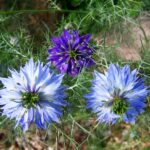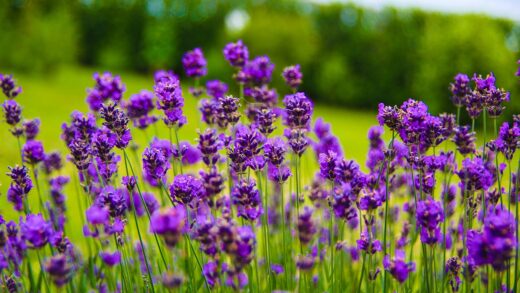The Burnet Rose is exceptionally well-equipped to handle winter conditions, boasting a hardiness that makes it a reliable performer even in very cold climates. Its natural resilience, honed in the harsh coastal and upland regions of its native habitat, means that in most gardening zones, it requires little to no special protection to survive the winter months. Unlike tender hybrid tea roses that often need to be carefully wrapped or mounded with soil, an established Burnet Rose can typically be left to face the elements on its own. The primary focus of winter care is not on elaborate protection, but on simple preparatory steps in the autumn to ensure the plant enters its dormant period in a healthy and strong state, ready to burst back into life in the spring.
The preparations for winter should begin in the late summer and early autumn. It is crucial to stop all feeding or fertilisation by mid-summer. Applying fertiliser late in the season can stimulate a flush of new, tender growth that will not have had sufficient time to mature and “harden off” before the first frosts arrive. This soft growth is extremely vulnerable to frost damage, which can weaken the plant and create entry points for diseases. Allowing the plant to naturally slow its growth as the days shorten is the best way to prepare it for dormancy.
Similarly, you should avoid any significant pruning in the autumn. While it may be tempting to tidy up the shrub before winter, pruning can also encourage new growth that is susceptible to cold damage. The best time for structural pruning is in the late winter or very early spring, just before the plant breaks dormancy. The only cutting you should consider in the autumn is the removal of any clearly dead, damaged, or diseased canes, which can be done at any time of year.
One of the most valuable aspects of the Burnet Rose in the winter garden is its display of persistent hips. After the flowers fade in the summer, they develop into large, spherical hips that ripen to a deep purplish-black in the autumn. It is essential not to deadhead the faded flowers if you want to enjoy this feature. These hips not only provide striking visual interest against a snowy backdrop but are also a valuable food source for birds and other wildlife during the lean winter months, adding ecological value to your garden.
Autumn preparation
As autumn progresses and the leaves begin to change colour and fall, a thorough clean-up around the base of the Burnet Rose is a highly recommended task. Raking up and disposing of all fallen leaves and other debris is an important aspect of garden hygiene. This simple action helps to remove any fungal spores, such as those that cause black spot, which might be overwintering on the dead foliage. By removing this source of potential infection, you significantly reduce the likelihood of the disease re-emerging to trouble your plant in the following spring.
More articles on this topic
Ensuring the plant is well-hydrated before the ground freezes is another important preparatory step, particularly if the autumn has been dry. Water is an excellent insulator, and moist soil will protect the root system from deep freezes more effectively than dry soil. Give your rose a few deep, thorough waterings in the weeks leading up to the first hard frost, allowing the soil to absorb the moisture well. However, be careful not to create waterlogged conditions; the goal is moist, not saturated, soil.
Applying a layer of mulch in the late autumn, after the first light frost but before the ground freezes solid, can be beneficial, especially for younger plants or in colder regions. A two to four-inch layer of organic material like shredded leaves, wood chips, or straw spread over the root zone acts like a protective blanket. This mulch helps to insulate the roots from the most extreme temperature fluctuations, preventing the damaging effects of repeated freezing and thawing cycles which can heave plants out of the ground.
When applying the winter mulch, be sure to keep it a few inches away from the main stems or crown of the plant. Piling mulch directly against the canes can trap moisture, which can lead to rot and may also provide a cozy winter home for rodents like voles, which can girdle and kill the canes by chewing on the bark. Maintaining a small, clear area around the base of the plant ensures good air circulation and discourages pests.
Protection in harsh climates
While the Burnet Rose is renowned for its hardiness, gardeners in extremely cold climates (such as USDA zones 2 or 3) might consider taking some minor extra precautions, particularly for newly planted or young shrubs whose root systems are not yet fully established. In these regions, the combination of severe cold, drying winter winds, and lack of consistent snow cover can be challenging for any plant. A little extra protection can provide peace of mind and ensure the plant’s survival.
More articles on this topic
One of the simplest methods of protection is to ensure a thick layer of insulating mulch is in place. After the ground has frozen, you can increase the depth of your mulch layer to six inches or more. An excellent material for this is loose straw or shredded leaves, which trap air and provide superb insulation. Piling loose snow around the base of the plant is also a fantastic way to protect it, as snow is one of the best natural insulators available.
For protection against harsh, desiccating winter winds, you could create a simple windbreak. This can be constructed by driving a few stakes into the ground on the windward side of the plant and stretching a piece of burlap between them. This barrier will deflect the worst of the wind, reducing moisture loss from the canes (a phenomenon known as winter desiccation) and preventing windburn. It is important that the burlap does not wrap tightly around the plant, as this can trap moisture and reduce air circulation.
In most cases, however, even in quite cold climates, an established Burnet Rose will not require such measures. Its own dense, twiggy structure and low-growing habit provide a fair amount of self-protection. The hardiness of this species is one of its primary virtues, so it is often best to adopt a “wait and see” approach. Providing extra protection is generally only necessary if you have experienced winter damage to the plant in previous years.
Pests and problems in winter
Winter is a dormant period for most pests and diseases, so you are unlikely to encounter active insect infestations or fungal outbreaks during the cold months. The primary threats to the Burnet Rose during winter are environmental and animal-related. One of the biggest challenges can be damage from rodents, such as rabbits, voles, and mice. When their usual food sources are scarce, especially under a blanket of snow, they may turn to chewing the bark from the canes of woody plants like roses.
To prevent this type of damage, you can place a cylinder of hardware cloth or a commercial tree guard around the base of the main stems. The cylinder should be wide enough that it doesn’t touch the canes and should be buried an inch or two into the soil to prevent animals from tunneling underneath it. This physical barrier is a very effective deterrent. Avoiding thick piles of mulch directly against the stems also helps, as this removes a potential hiding place for voles.
Another potential winter problem is physical damage from the weight of heavy, wet snow or ice. The dense, twiggy structure of the Burnet Rose can catch and hold a lot of snow. A particularly heavy snowfall can bend and even break the canes. If you have a heavy snow event, you can gently brush some of the excess snow off the branches with a broom to relieve the weight. However, do not attempt to remove ice if the branches become encased, as this is more likely to cause them to snap. It is better to let the ice melt naturally.
Winter sun and wind can also cause a condition called sunscald on the canes. This occurs on sunny winter days when the sun warms the south-facing side of the canes, causing the cells to become active. When the sun sets, the temperature plummets, and these active cells freeze and rupture, causing long, discoloured cracks in the bark. While not common on the multi-stemmed Burnet Rose, it can happen. The windbreaks mentioned for harsh climates can also help to prevent this issue.
Spring revival
As the winter begins to recede and the first signs of spring appear, you can start to reverse the winterizing process. Once the threat of hard frosts has passed, you can begin to gradually pull back the heavy layer of winter mulch from around the crown of the plant. Doing this allows the sun to reach and warm the soil, which encourages the plant to break dormancy and start its new season of growth. Do not remove all of the mulch at once; do it in stages over a couple of weeks to allow the plant to acclimatize.
Early spring, before the leaf buds begin to swell, is the perfect time to inspect the plant for any winter damage. Look for any canes that have been broken by snow, damaged by rodents, or killed by the cold. Winter-killed canes will appear shrivelled, dry, and will have no green under the bark if you scratch it with a fingernail. Prune out any of this damaged wood, cutting back to a healthy, live bud or to the base of the plant. This is also the time to do any structural or renewal pruning for the year.
Once the soil is workable, this is the time to apply a fresh layer of compost around the base of the plant. This will provide a gentle, slow-release source of nutrients to support the flush of new growth that is about to begin. The organic matter will also continue to improve the soil structure and its ability to retain moisture as the weather warms up. This spring feeding sets the stage for a healthy and productive growing season.
Be patient with your rose in the spring. The Burnet Rose is famously one of the earliest roses to leaf out and bloom, but the exact timing will depend on your specific climate and the weather conditions of the year. Once it begins to grow, it will do so with vigour. Watching the new, ferny foliage emerge and the flower buds swell is a rewarding experience that marks the definitive end of winter and the successful overwintering of your resilient shrub.
📷No machine-readable author provided. Svdmolen assumed (based on copyright claims)., CC BY-SA 3.0, via Wikimedia Commons


















